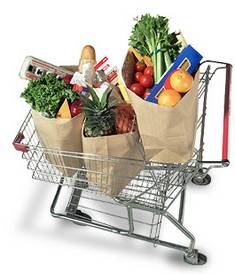 When you lead a busy life, grocery shopping can be a time-consuming chore. If you’re beginning a new diet, you have probably seen a number of resources that offer sample grocery lists and suggested items that deserve a permanent place in your pantry or refrigerator.
When you lead a busy life, grocery shopping can be a time-consuming chore. If you’re beginning a new diet, you have probably seen a number of resources that offer sample grocery lists and suggested items that deserve a permanent place in your pantry or refrigerator.
While those lists can be helpful, they are sometimes more confusing than useful. Recently, we caught up with Caroline Cederquist, M.D. and founder of BistroMD, a gourmet meal delivery service developed by physicians. Cederquist shared her top ten grocery list items that she recommends patients purchase when they want to eat a healthier diet.
“The shopping list consists of top 10 mainstay items that help you stay on track, lose weight, and add lots of flavor to meals and snacks,” Cederquist said. “A lot of these items can also be used to substitute higher calorie foods for healthier ones.”
We decided to weigh in on Cederquist’s grocery list purchases and add our own insight as to why you should keep these power foods in your kitchen.
Greek yogurt: Not only is it a satisfying snack or breakfast – especially when topped with fruit, honey or granola – but Greek yogurt is a perfect substitute for sour cream or mayonnaise when you want to lighten your favorite recipes.
Edamame: Packed with protein, edamame is a great snack to keep on hand. Add the shelled beans to a salad or snack on the green pods while you’re making dinner to prevent pre-meal grazing.
Olive oil: We know that the health benefits of olive oil are numerous so keeping a bottle on hand in your pantry for cooking meat, poultry and fish on the stove top is always a good idea.
 Vinegar: If white vinegar makes you think of dying Easter eggs, get a little creative with what you keep in your pantry. Apple cider vinegar, red wine vinegar and white wine vinegar all make fabulous additions to salad dressings and sauces.
Vinegar: If white vinegar makes you think of dying Easter eggs, get a little creative with what you keep in your pantry. Apple cider vinegar, red wine vinegar and white wine vinegar all make fabulous additions to salad dressings and sauces.
Canned tuna or chicken: Full of protein, canned chicken and tuna are good to have on hand in your cabinet. Eat them plain for snacks or mix them with 1/2 cup chopped vegetables and a tablespoon or two of light mayonnaise for a fast, healthy lunch.
Protein powder: While this might not be a staple for everyone’s diet, if you have a rigorous exercise routine, some health professionals recommend a high protein diet. Talk to your trainer or nutritionist about the best protein powder supplements for your dietary needs before you make a purchase.
Chicken broth: With as few as 15 calories per cup, low-sodium broth can be a good staple for home cooking. Use it for sauces and as a base for soup instead of overusing potentially fattening dairy products like cream or whole milk.
Frozen fish or shrimp: If you don’t live near a coast, it is often better to buy frozen fish, which is probably flash frozen minutes after being caught, thus fresher than the “fresh” version that has been shipped across the country at higher temperatures. Look for frozen white fish or shrimp for quick week night dinners so you always have a healthy meal on hand.
Salsa: A great dip for vegetables and substitute for creamy salad dressings, salsa is low in calories and offers nutritious lycopene. Eat it as a snack or use it to prepare a delicious recipe like Salsa Chicken.
Bagged salads: There is some debate over whether bagged salads are as fresh as buying whole lettuce or spinach. However, if you’re crunched for time, it’s better to buy lettuce in a bag than skip a green salad altogether. Protect yourself from possible E.Coli contamination by washing greens, even if they are labeled “pre-washed.”
